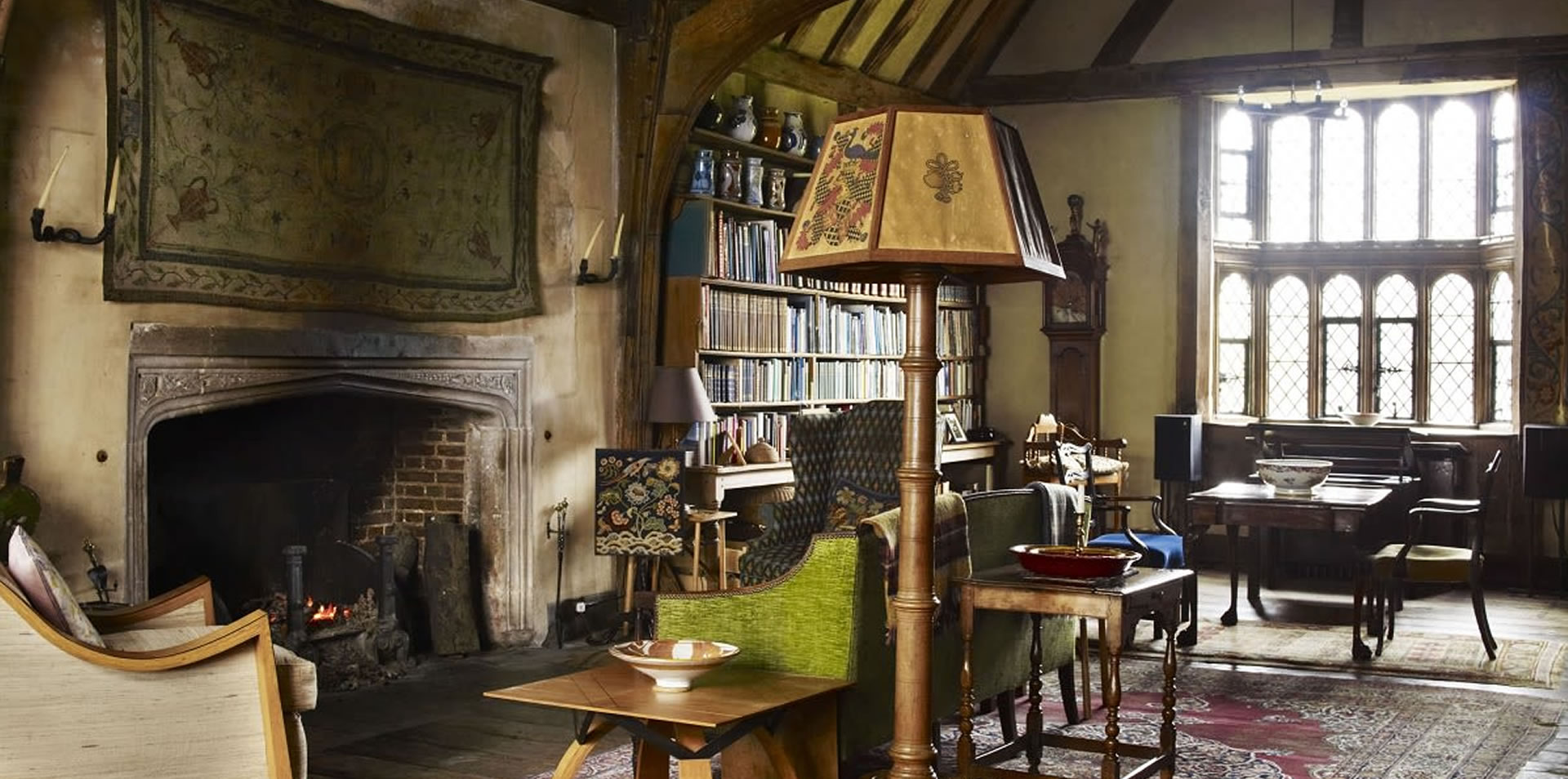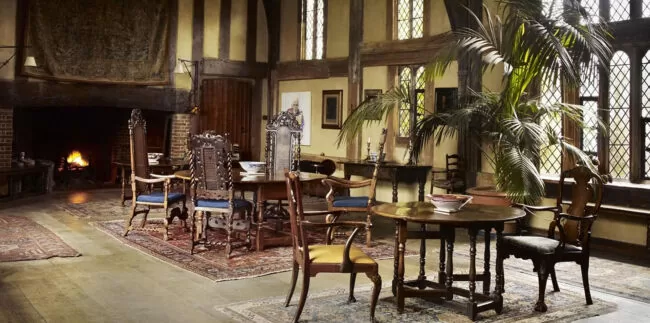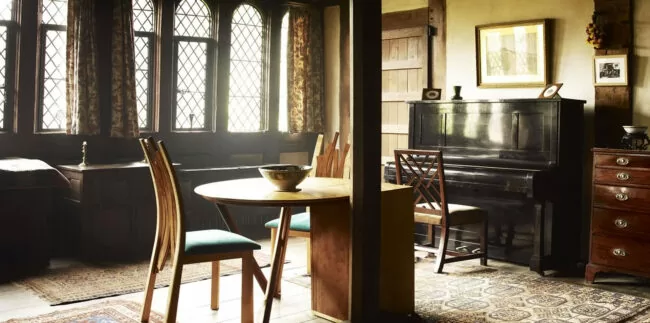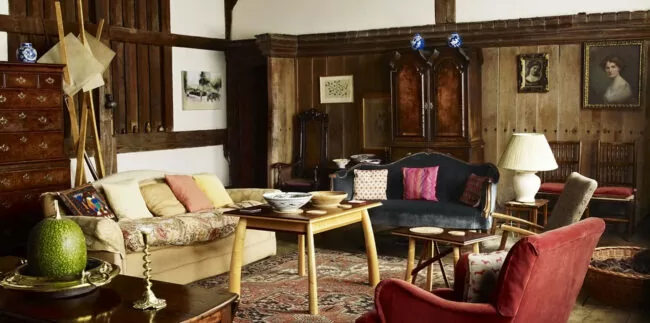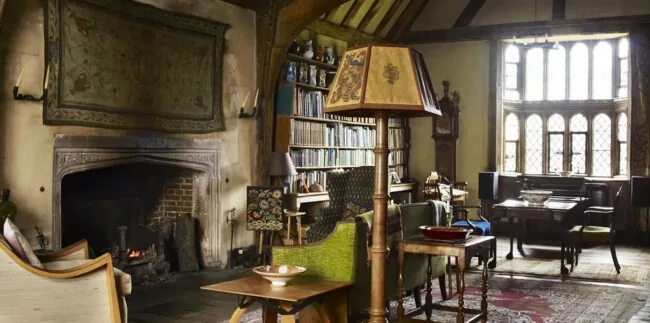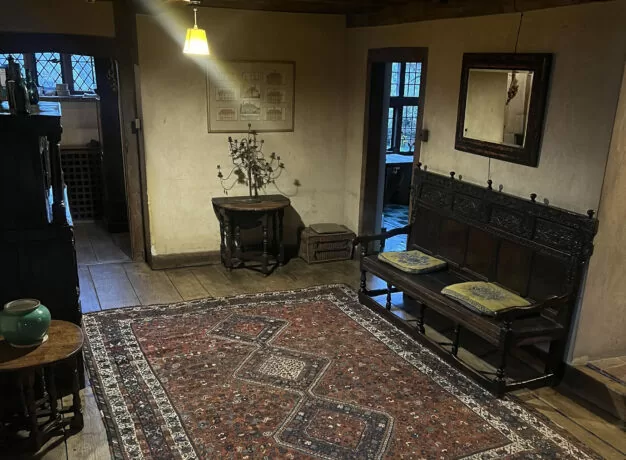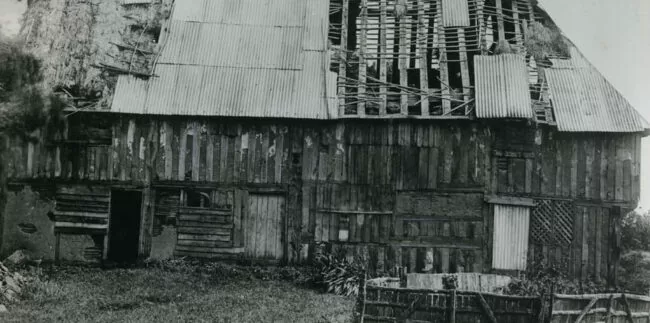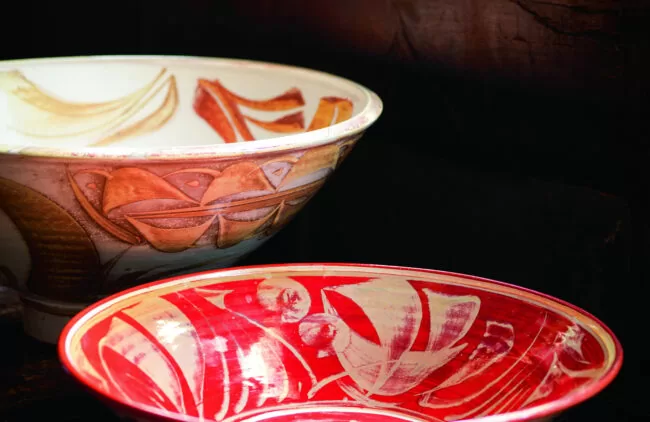The Solar
By 1910, the original staircase to the solar had long since disappeared, and Lutyens replaced a plain 19th-century staircase with the present oak one. The cellar door is the only original one in the house and was found in the moat. It was used as a model for others. A portrait engraving of Lutyens hangs here, as does a fine embroidered carpet, made by Letitia, the Lloyds’ only daughter.
Upstairs, by the Solar door, hangs a rubbing of the brass memorial to Sir William de Etchingham (died 1412) in Etchingham Church. He was a relative of the Etchinghams who owned Great Dixter in the 15th century.
The Solar was the principal private apartment of the medieval house. The fireplace dates from the late 15th century and its spandrels bear the devices of the Lewknors of Bodiam (a hawk’s lure) and the antlered head of the Windsors, who inherited Dixter about the time the fireplace was installed.
The Solar was divided into three rooms by John Glydd and reconstituted by Lloyds.
The Squint into the Great Hall was a typical feature of such houses but in fact, was inserted by Lutyens.
The window at the south end contains a 16th-century painted glass panel copied after a print of 1518 by Albrecht Dürer.
When Nathaniel Lloyd turned to architecture, he used the north end as his office, working at the draughtsman’s table. A photograph on the bookcase to the left shows him at work.
